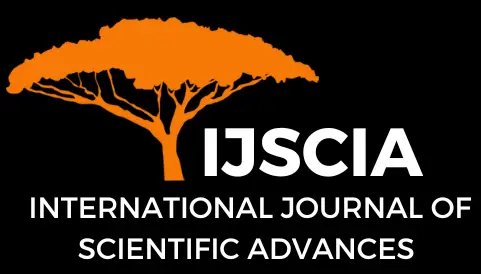Diagnostic Accuracy of Clinical Examination, Ultrasonography, and Fine-Needle Aspiration Biopsy to Determine Thyroid Nodules Malignancies
Made Gian Indra Rahayuda1*, I Wayan Sudarsa2, Ida Bagus Made Suryawisesa2, I Wayan Periadijaya3, Putu Anda Tusta Adiputra2, and I Wayan Niryana4
Abstract
Background: Thyroid nodules are one of the most common health problems in the thyroid gland. The increase in the number of new cancers by experts is estimated to be related to the increase in the intensity of diagnostic tests that can be performed in determining the presence of malignancy from clinical examination, ultrasound, and FNAB. Aim: Knowing the diagnostic accuracy of clinical examination, ultrasound examination, and FNAB in determining thyroid malignancy. Method: a cross-sectional study of diagnostic tests performed at Central General Hospital Prof. Dr. IGNG Ngoerah, Denpasar. The study subjects were patients with thyroid nodule abnormalities who came to the surgical oncology polyclinic. Data analysis includes descriptive statistics, bivariate analysis with Chi-Square, binary logistic regression analysis, and sensitivity and specificity test with receiver operating characteristic (ROC) curve. Results: There were 71 research subjects, 16 males (22.5%) and 55 females (77.5%) with an average age of 43.75 ± 12.52 years. The results of bivariate analysis of diagnostic accuracy showed that the number of nodules was not statistically significant with p=0.531, sensitivity 62.9%, specificity 44.4%, PPV 52.4%, and NPV 55.2%. Nodule size was not significant with p=0.286, sensitivity 45.7%, specificity 66.7%, PPV 57.1% and NPV 55.8%.the lymph nodes with a p=0.005 sensitivity of 74.3%, specificity of 58.3%, PPV of 63.4%, and NPV of 70%. Ultrasound examination (TRIADS ACR) had a p=0.003, sensitivity of 91.4%, specificity of 38.9%, PPV of 59.3%, and NPV of 82.4%, FNAB examination (Bethesda) with a p=0.005 sensitivity of 31.4%, specificity of 94.4%, PPV of 84.6%%, and NPV of 58.6%; age, gender, nodule size, and nodule number were not statistically significant. The assessment score for LNs enlargement was 4, the ultrasound score was five, and the FNAB score was 5. The ROC curve analysis obtained a sensitivity value of 77.1% and a specificity of 75% with a cut-off value of 7. A score ≥7 has a high risk of 10.13 times showing postoperative anatomical pathology with the results of malignancy p < 0.001 (95% CI 3.39-30.16), 77.1% sensitivity, 75% specificity, 75% PPV, and 77.1% NPV. Conclusion: Lymph nodes (LNs) enlargement, ultrasound score based on TIRADS ACR, and fine-needle aspiration biopsy based on Bethesda score have good enough diagnostic accuracy in determining malignancy in thyroid nodules. Meanwhile the number of nodules and nodule size did not have a significant effect on the malignancy of thyroid nodules.
Keywords
FNAB; malignancy; thyroid nodule; lymph node enlargement; ultrasound
Cite This Article
Rahayuda, M. G. I., Sudarsa, I. W., Suryawisesa, I. B. M., Periadijaya, I. W., Adiputra, P. A. T., Niryana, I. W. (2024). Diagnostic Accuracy of Clinical Examination, Ultrasonography, and Fine-Needle Aspiration Biopsy to Determine Thyroid Nodules Malignancies. International Journal of Scientific Advances (IJSCIA), Volume 5| Issue 3: May-Jun 2024, Pages 528-538, URL: https://www.ijscia.com/wp-content/uploads/2024/06/Volume5-Issue3-May-Jun-No.614-528-538.pdf
Volume 5 | Issue 3: May-Jun 2024


